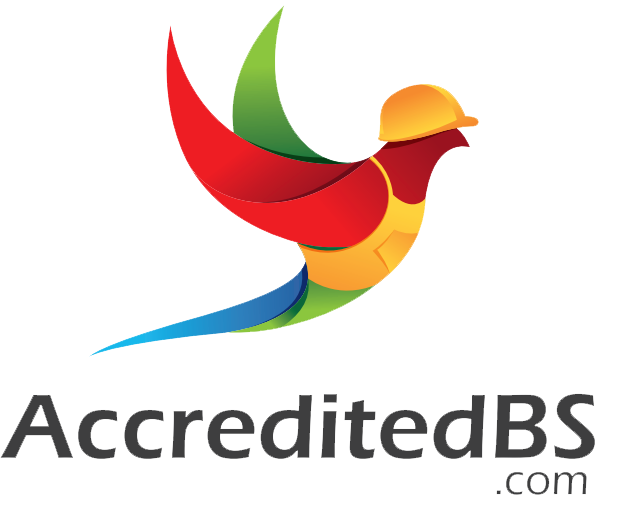
29 May What is the Difference Between OSHA 10 & OSHA 30?
The Occupational Safety and Health Administration (OSHA) mandates various training programs to ensure workplace safety across different industries. Among these, the OSHA 10 and OSHA 30 courses stand out as fundamental training modules. These courses cater to different levels of employees and are essential in promoting a culture of safety. But what sets them apart? Let’s delve into the differences between OSHA 10 and OSHA 30.
Overview of OSHA 10 and OSHA 30 Courses
OSHA 10 and OSHA 30 courses are designed to equip workers with essential safety knowledge. The numbers denote the total training hours: OSHA 10 spans ten hours, while OSHA 30 extends to thirty hours. These courses cater to different roles within an organization, tailored to the specific safety needs and responsibilities of various job functions.
OSHA 10 Construction Course
The OSHA 10 Construction Course is primarily aimed at entry-level workers. It covers basic safety and health hazards that new workers might encounter on a construction site. Here are some key topics covered:
- Introduction to OSHA
- Electrical safety
- Fall protection
- Personal protective equipment (PPE)
- Hazard communication
- Scaffolding safety
- Stairways and ladders
This course provides a broad overview, ensuring that workers recognize and avoid potential hazards.
OSHA 30 Construction Course
In contrast, the OSHA 30 Construction Course is designed for supervisors and workers with safety responsibilities. It covers a broader range of topics in more depth, including:
- Introduction to OSHA
- Managing safety and health
- Hazard communication
- Personal protective equipment (PPE)
- Electrical safety
- Fall protection
- Scaffolding safety
- Stairways and ladders
- Excavations
- Health hazards in construction
- Cranes and rigging
- Steel erection
- Powered industrial vehicles
This comprehensive training ensures that supervisors can identify and mitigate hazards effectively, fostering a safer work environment.
Key Differences Between OSHA 10 and OSHA 30
Understanding the difference between OSHA 10 and OSHA 30 is crucial for employers and employees alike. Here’s a detailed comparison:
1. Duration and Depth of Training
- OSHA 10: A 10-hour course designed for entry-level workers. It provides an overview of basic safety and health hazards.
- OSHA 30: A 30-hour course aimed at supervisors and workers with safety responsibilities. It covers a broader range of topics in more depth.
2. Target Audience
- OSHA 10: Ideal for new or entry-level workers to help them recognize and avoid workplace hazards.
- OSHA 30: Suited for supervisors, managers, and workers with safety oversight roles, providing comprehensive training on workplace hazards and safety management.
3. Course Content
- OSHA 10: Focuses on general safety, common hazards, and basic preventative measures.
- OSHA 30: Includes advanced topics like safety program management, detailed hazard communication, and specific regulations.
4. Certification
- Both courses provide a certification card upon completion, which is a valuable credential in the construction industry. However, the OSHA 30 card holds more weight for supervisory roles and higher safety responsibilities.
5. Compliance and Regulations
- OSHA 10: Meets the minimum requirement for safety awareness among entry-level workers.
- OSHA 30: Often required by employers for supervisory positions to ensure comprehensive understanding and compliance with OSHA regulations.
Benefits of OSHA Training
Enrolling in OSHA 10 and OSHA 30 courses offers numerous benefits:
- Enhanced Safety Awareness: Workers gain a thorough understanding of safety protocols, reducing the risk of accidents.
- Regulatory Compliance: Ensures that companies meet OSHA standards, avoiding hefty fines and legal issues.
- Improved Work Environment: A safer workplace leads to higher productivity, reduced downtime, and lower healthcare costs.
- Professional Development: Certification enhances a worker’s credentials, making them more valuable to employers.
- Reduced Liability: Proper training minimizes the risk of workplace injuries, protecting both employees and employers.
Choosing the Right Course
Selecting between OSHA 10 and OSHA 30 depends on your role and responsibilities within the organization. Here’s a quick guide to help you decide:
- If you’re an entry-level worker: Opt for the OSHA 10 course to get acquainted with basic safety practices.
- If you’re a supervisor or manager: The OSHA 30 course is more suitable, providing in-depth knowledge and the skills needed to manage safety programs effectively.
Frequently Asked Questions (FAQs)
1. What is the primary difference between OSHA 10 and OSHA 30?
The primary difference lies in the duration and depth of training. OSHA 10 is a 10-hour course focusing on basic safety awareness, while OSHA 30 is a 30-hour course covering a wider range of topics in greater detail, aimed at supervisors and those with safety responsibilities.
2. Is OSHA 10 mandatory for all construction workers?
While OSHA 10 is not federally mandated for all construction workers, many employers and states require it as a minimum standard for workplace safety training.
3. Can I take OSHA 30 if I haven’t completed OSHA 10?
Yes, you can take OSHA 30 without having completed OSHA 10. The courses are independent of each other, although OSHA 30 builds on many topics covered in OSHA 10.
4. How long is the OSHA certification valid?
OSHA certification does not expire at the federal level, but some states or employers may require periodic refresher training to ensure ongoing compliance and safety awareness.
5. Where can I take OSHA 10 and OSHA 30 courses?
OSHA 10 and OSHA 30 courses are offered by OSHA-authorized training providers. These courses can be taken in-person or online, providing flexibility to suit different learning preferences and schedules.
Sum Up
By understanding the differences between OSHA 10 and OSHA 30, you can make informed decisions about your safety training needs. Whether you’re an entry-level worker or a supervisor, these courses are invaluable in promoting a safe and compliant workplace. For comprehensive safety training tailored to your team’s needs, contact Accredited Bilingual Safety Training at (646) 766-9898. Get your quote today!

Sorry, the comment form is closed at this time.